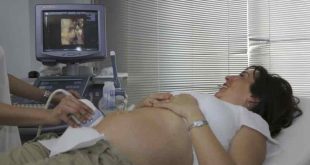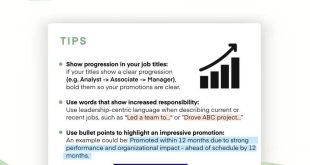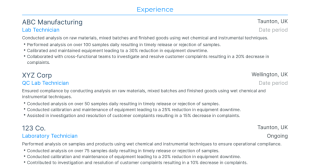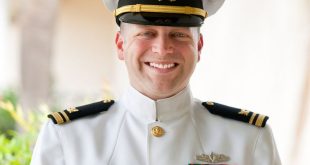Ways To Become An Astronaut – When you buy through links on our site, we may earn an affiliate commission. This is how it works.
Being an astronaut is a big commitment. Astronaut candidates – typically selected in their 30s and 40s – typically leave prestigious jobs for the chance to become astronauts, and start again at the bottom of the ladder. Training means long work days and a lot of travel. There is also no guarantee that they will come there.
Ways To Become An Astronaut
However, more than 18,000 Americans competed in this round of NASA astronaut selection. The new candidates will be announced on Wednesday (June 7), and will register for basic education in August. Here’s what it takes to become a NASA astronaut and what happens after selection.
How To Become A Astronaut Complete Guide
NASA has strict requirements to be an astronaut. The job not only requires you to be in top physical condition, but also requires the technical skills needed to take on difficult tasks in a trade or on a station far from home.
The agency’s basic requirement is a bachelor’s degree in engineering, biological sciences, natural sciences, computer science, or mathematics, followed by three years of work experience (or 1,000 hours of pilot time in jet aircraft). Candidates must also pass a NASA astronaut physical examination. But there are many other skills that could be useful for selection, such as diving, land experience, leadership experience, and the ability to handle other languages (especially Russian, which all astronauts must learn today).
Pictured here: These are the basic requirements to be a NASA astronaut, but the selected candidates usually have much more experience.
NASA has selected 22 “classes” of astronauts since the first group of seven astronauts was selected in 1959 for the Mercury program. The program has grown and changed significantly since then. The first few classes of astronauts were drawn largely from the military, especially test pilots – a group considered prepared to handle the extreme dangers of . But as NASA’s program evolved, more diverse skills were needed.
How To Become An Astronaut
For example, the fourth class of astronauts (in 1969) was known as “Scientists” and included Harrison J. Schmidt, who was the only geologist to walk on the Moon (during the Apollo 17 mission). Other notable classes include the 8th class in 1978 (including female, African American, and Asian American selections), the 16th class in 1996 (the largest class, with 44 members selected for frequent shuttle flights to build the international terminal), and the 21st class 2013 (first batch with 50/50 gender ratio. [International Terminal Construction (Photos)]
In this photo: NASA’s most recent group of astronauts, shown above, were selected in 2013. This was the first batch to be evenly split between male and female candidates.
The new astronaut class has a wide variety of vehicles to look forward to. Today, astronauts use the Russian Soyuz spacecraft to reach the International Station, which is the main destination for testing long-range flights. However, in the coming years, NASA hopes to once again move beyond low Earth orbit to undertake missions to the Moon and Mars. If that happens, the new class of astronauts will use the Orion spacecraft for deep exploration.
New astronauts can also look forward to launching from American soil once the new class of commercial vehicles is ready. Both X and Boeing are building ships for NASA’s Commercial Crew Program, which is expected to begin in earnest by the end of the decade. It will be the first time Americans have launched from the United States since the shuttle program ended in 2011. [Orion explained: NASA’s multi-purpose crew vehicle (infographic)]
What Does It Take To Be A Nasa Astronaut
New astronauts may begin their careers traveling to the International Station, or they may find themselves flying further. It all depends on the direction of US policy in the coming years and the programs in which NASA finds itself involved. The station is scheduled to last until 2024, but could be extended until 2028 or even longer.
There are other, more vague plans, but NASA has several ideas in mind. The agency is testing its Orion rover, which is expected to make an unmanned flyby of the moon in 2019. (The board considered putting astronauts on board, but decided against it because of the additional technical burden.) Orion will then transport humans deep into the Earth. – Destinations in 2020 and beyond.
Where next? NASA hopes to bring astronauts to Mars in the 2030s if its current plan receives long-term support. As part of that, the agency recently announced a “deep gateway” station near the moon that could help astronauts train for deep missions or prepare for a trip to Mars.
In this photo: An artist’s rendering of the “Deep Gate” station that could be used near the Moon in the coming years.
How To Become An Astronaut In Bitlife
While the public mostly perceives astronauts while they are in space, in reality astronauts will only spend a small portion of their careers aloft. Most of their time will be spent training and supporting other missions.
First, astronaut candidates must have about two years of basic training, where they learn survival training, language, technical skills and other things they need to become an astronaut. After graduation, new astronauts may be assigned to mission or technical roles in the Astronaut Office at the Johnson Center in Houston. These roles may include supporting current missions or advising NASA engineers on how to develop future vehicles.
In this photo: Anne McClain, a member of the astronaut class of 2013, works as a capsule liaison officer (CapCom) with the International Station. This role involves an astronaut on Earth communicating directly with the astronauts on the station and relaying instructions from the rest of mission control.
Astronaut candidates go through an extensive process before the newly selected class is certified as flight-ready astronauts. Among their many tasks are learning how to walk, how to make robots, how to fly planes, and how to operate the international terminal.
How Do Astronauts Practice Self Care In Space?
Astronaut candidates will fly NASA’s fleet of T-38 aircraft to gain piloting skills. Practice walking in the 60-foot-deep pool at the Johnson Center (called the Neutral Buoyancy Lab); Pick up a simulated vehicle using a pilot version of the station’s robotic arm, Canadarm2; Learn Russian; Receive basic training in station operation. Astronauts also deepen their leadership and following skills through geology and survival training. [Story image: Station model in the neutral buoyancy simulator]
While the astronaut candidates selected by NASA will primarily work with that agency, they will also find themselves part of a network of international partnerships. Besides commercial partners in the United States developing flight hardware and various NASA centers working on human flight, there are 16 countries participating in the international station – each with its own expertise.
For example, Roscosmos (the Russian federal agency) operates several modules on the station, transporting astronauts to use their Soyuz rocket. The Canadian agency is heavily involved in robotic operations, such as seizing cargo ships using Canadarm2. Other key international partners include the European Agency (ESA) and the Japan Aeronautics Exploration Agency (JAXA). Each of these agencies has astronauts working on the station and in the astronaut office.
In this photo: All major partner nations are represented for the first time on Expedition 20 on the international leg. From left to right: Roscosmos cosmonaut Roman Romanenko; Japanese astronaut Koichi Wakata; European astronaut Frank DeWine; NASA astronaut Michael Barratt; CSA astronaut Bob Thirsk; NASA astronaut Tim Cobra; And Russian cosmonaut Gennady Padalka.
How To Become An Astronaut
This round saw a record 18,353 applications for a handful of jobs at NASA. Initially, staff reviewed each application to see if it met basic qualifications. Each eligible application was then reviewed by a committee – the Astronaut Evaluation Committee. The jury consists of about 50 people, most of whom are current astronauts. The committee selected a few hundred of the most qualified candidates, then conducted reference checks on each candidate.
This move narrowed the number of candidates to just 120 people. A smaller group, the Astronaut Selection Board, called these candidates for interviews and medical screening. The top 50 candidates then underwent a second round of interviews and further medical examinations. Astronaut finalists will be selected from this group of 50 individuals.
In this photo: An astronaut application review team, including members of NASA’s human resources departments, reviews applications from aspiring astronauts.
Lucky candidates who qualify will receive a phone call from the Chief of the Flight Operations Directorate at NASA’s Johnson Center, as well as the Chief of the Astronaut Office. NASA is asking candidates to share the news only with their immediate families until NASA can make an official announcement.
Do Have What It Takes To Be An Astronaut?
NASA typically holds a press conference to announce new nominees and invites reporters and those with social media accounts to ask questions about the new astronaut class. After that, candidates are quickly sent to training, giving them little time
Requirements to become an astronaut, how to become an astronaut, degrees to become an astronaut, ways to become an actor, training to become an astronaut, nasa become an astronaut, qualifications to become an astronaut, ways to become an entrepreneur, become an astronaut, apply to become an astronaut, steps to become an astronaut, ways to become an electrician



